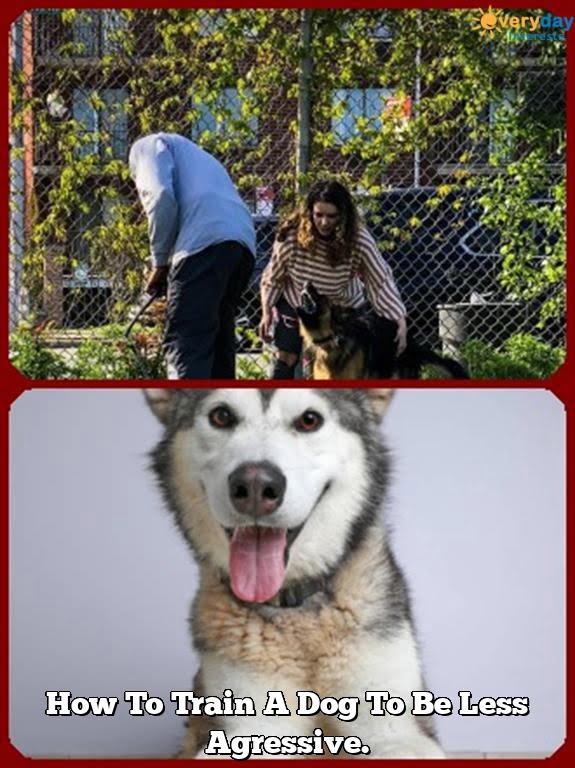It is important to realize that dog barking is a natural behavior, and that most dogs bark for good reasons. However, some barking can be excessive and can lead to problems like neighborhood disturbances or even dog bites. If your dog is barking too much, there are a few things you can do to train him to bark less.
The first step is to determine why your dog is barking. There are many different reasons, and the solution will vary depending on the root cause. If your dog is barking out of excitement or fear, you will need to work on obedience training to help him learn to control his behavior. If your dog is barking for attention, you will need to teach him to only bark when he needs something, and to stop barking when he gets what he wants.
The next step is to start working on a behavior modification plan. This plan should include a positive reinforcement system to reward your dog for good behavior, as well as a punishment system to deter bad behavior. Be sure to start with small goals and gradually increase the difficulty as your dog masters each step.
Some tips to help you get started:
-Start by teaching your dog to “speak” and “quiet” on cue. Once your dog is responding consistently, put him in situations (outside, during a car ride, etc.) where he is likely to bark and make sure only to give the cue to “speak” or “quiet” when he is actually barking.
-If your dog is barking for attention, teach him to “speak” or “quiet” for a food treat. When he is quiet, immediately give him the treat and praise him.
-If your dog is barking out of excitement or fear, practice basic obedience commands like sit, stay, and come. Once your dog is responding consistently, start asking him to do these commands in situations (outside, during a car ride, etc.) where he is likely to bark.
-Be consistent with your commands and rewards, and be sure to keep your patience while training your dog. Like with most things in life, success with this behavior modification plan will take time and patience.
How To Train Dog Not To Bark At Passers By
Do you have a dog that barks incessantly at passers by? If so, you’re not alone. A large number of dogs bark at people and other animals when they’re outside. While barking can be a normal and healthy behavior for dogs, it can also be extremely annoying to the people who live or work near them. If your dog is barking at people, there are a few things you can do to train him to stop.
The first step in training your dog not to bark at passers by is to determine why he’s doing it. Some dogs bark at people because they’re excited and want to get their attention. Other dogs may bark because they’re afraid of people or because they see them as a threat. If you can determine why your dog is barking, you can work on correcting the problem.
If your dog is barking out of excitement, you’ll need to work on getting him to calm down. One way to do this is to teach him to “speak” and “quiet” on cue. When your dog barks, tell him “speak” and give him a treat. Once he’s been quiet for a few seconds, tell him “quiet” and give him another treat. Once he understands the commands, you can use them to get him to stop barking at people.
If your dog is barking out of fear or aggression, you’ll need to work on correcting the underlying problem. You may need the help of a professional trainer to do this. In most cases, however, you can correct the problem by using positive reinforcement. Start by rewarding your dog for not barking at people. Once he’s been quiet for a few seconds, give him a treat or a pat on the head. As he continues to obey the command, increase the length of time he has to stay quiet before you give him a treat.
It may take some time, but with patience and consistency, you can teach your dog not to bark at passers by.
Bark Busters Dog Training Cost
There is no one-size-fits-all answer to the question of how much Bark Busters dog training costs, as the price may vary depending on the location, the size and age of the dog, and the specific services required. However, most Bark Busters training programs cost between $175 and $450.
One of the benefits of Bark Busters training is that the program is tailored to the specific needs of each dog and owner. The trainer will first come to your home to assess the dog’s behavior and discuss the goals of the training program. The trainer will then work with you and your dog one-on-one in your home to address the specific issues you are experiencing.
The Bark Busters training process is based on positive reinforcement and uses no physical punishment, so you can be assured that your dog will be treated with respect at all times. The trainers use a variety of methods to help your dog understand what is expected of him, including voice control, body language, and treats.
The Bark Busters training program is not a quick fix, and it may take a few weeks or months to see significant results. However, the Bark Busters trainers will work with you until you are happy with the results. If you are not satisfied with the training, Bark Busters offers a money-back satisfaction guarantee.
How To Train Dog Not To Bark In Crate
One of the most common reasons people crate train their dogs is to stop them from barking in the crate. While there are a number of ways to train your dog not to bark in the crate, the most important part is to be consistent with your commands and rewards.
The first step is to make sure your dog is comfortable in the crate. If your dog is hesitant to enter the crate, put a few treats or toys inside to entice him. Once your dog is comfortable going into the crate, start by closing the door for a few seconds at a time and gradually increase the amount of time the door is closed.
Once your dog is comfortable going into and staying in the crate with the door closed, it’s time to start working on stopping the barking. When your dog barks, say “No bark” in a firm voice and give him a few seconds to stop barking. If he continues, calmly put him in the crate and close the door. As soon as he stops barking, let him out of the crate and give him a treat.
It’s important to be consistent with your commands and rewards, so make sure to practice this often. With a little patience and perseverance, you can train your dog not to bark in the crate.
How To Train Your Dog To Stop Barking On Walks
One of the most common complaints dog owners have is their dog’s incessant barking during walks. This can be extremely frustrating, especially if you live in a busy area. Luckily, there are a few things you can do to train your dog to stop barking on walks.
The first step is to determine why your dog is barking. There are a number of reasons why dogs may bark while on walks, including excitement, fear, boredom, and territoriality. Once you have determined the root of the problem, you can begin to address it.
If your dog is barking out of excitement, you will need to work on obedience training and teaching your dog to “speak” and “quiet” on cue. Start by teaching your dog the “speak” cue, and then reward him for barking with a treat or a toy. Once your dog is responding consistently, introduce the “quiet” cue, and reward him for stopping barking with a treat or a toy. Be sure to practice these commands regularly, and always reward your dog for obeying.
If your dog is barking out of fear or anxiety, you will need to work on socialization and obedience training. Start by taking your dog to a variety of different places, such as parks, stores, and sidewalks. Encourage your dog to greet people and dogs calmly, and reward him for behaving appropriately. You may also want to consider obedience training, as this can help your dog to feel more confident and secure.
If your dog is barking out of boredom, you will need to provide him with plenty of mental and physical stimulation. Start by providing your dog with plenty of exercise, such as walks, hikes, and trips to the park. You may also want to consider giving your dog puzzle toys or playing fetch with him. Be sure to provide your dog with plenty of attention and interaction, and make sure he has a place to rest and relax when he’s not playing.
Finally, if your dog is barking out of territoriality, you will need to work on obedience training and socialization. Start by teaching your dog to “speak” and “quiet” on cue, and reward him for obeying. Be sure to practice these commands regularly. Next, introduce your dog to a variety of different people and dogs, and reward him for behaving appropriately. Finally, work on teaching your dog to sit and stay when other people or animals are near.

Welcome to the blog! I am a professional dog trainer and have been working with dogs for many years. In this blog, I will be discussing various topics related to dog training, including tips, tricks, and advice. I hope you find this information helpful and informative. Thanks for reading!





